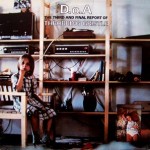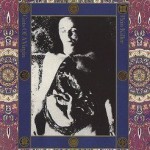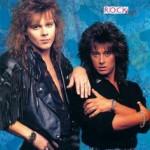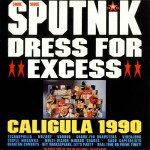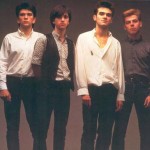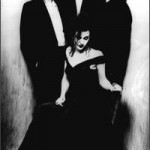The correct response to the title here is of course it depends who you are and what you did. But anyway; in a February when the big news story was the alarming spread of coronavirus/COVID-19, which history will tell us is either – (a) a pandemic like none seen since the 1918 flu outbreak which killed between 20 and 50 million people (quite a big ‘between’. that) or (b) an unfortunate but quite normal kind of illness which is causing inconvenience and a certain amount of tragedy but is mainly a media frenzy like SARS or Bird Flu, and will blow over soon – it seems a bit like fiddling while Rome burns to talk about music and books etc. But as everyone knows, Nero didn’t really fiddle while Rome burned, and anyway, the big and relatively thoughtful thing I was writing during the Christmas holidays is no further forward and I mainly spent February writing things for other places than my own website, so there it is.
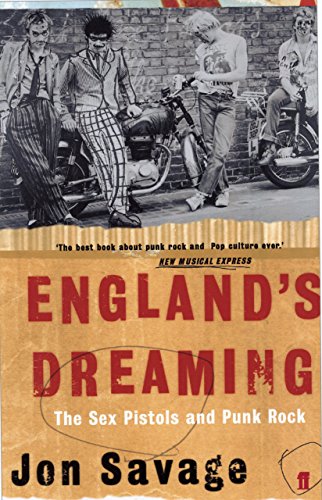 I just finished reading the newest edition* of Jon Savage’s brilliant England’s Dreaming which is as good as any music-related book I’ve ever read and made me realise how many parallels there are between now and the political situation in mid-70s Britain. Up to a point, that is. It would be hard, even I think for a conservative person, to see the victory of Johnson’s Tories as a return to some kind of sensible order in the way that deluded right wingers saw Thatcher’s victory – which did, it has to be said, render somewhat pointless the extreme right wing groups like the National Front & British Movement that had been growing in strength and influence throughout the decade. As with Johnson/the ERG and their wooing of the UKIP/nazi fanbase though, the reassurance that comes from seeing extremist groups losing popularity is soured (to put it mildly) by having people in charge who appeal to that demographic.
I just finished reading the newest edition* of Jon Savage’s brilliant England’s Dreaming which is as good as any music-related book I’ve ever read and made me realise how many parallels there are between now and the political situation in mid-70s Britain. Up to a point, that is. It would be hard, even I think for a conservative person, to see the victory of Johnson’s Tories as a return to some kind of sensible order in the way that deluded right wingers saw Thatcher’s victory – which did, it has to be said, render somewhat pointless the extreme right wing groups like the National Front & British Movement that had been growing in strength and influence throughout the decade. As with Johnson/the ERG and their wooing of the UKIP/nazi fanbase though, the reassurance that comes from seeing extremist groups losing popularity is soured (to put it mildly) by having people in charge who appeal to that demographic.
*the latest revised edition is from 2005, and is the one to get – the excellent introduction, which addresses the ‘Englishness’ of punk within the wider UK setting, is itself quite dated, though more relevant than ever, and this version also contains a brief summary of that most surprising part of the whole Sex Pistols story – the band’s 1996 reunion.
Reading about punk – especially remembering the very tail end of it in the early 80s (i.e. seeing the stereotypical 80s fashion punks and skinheads and reading THE EXPLOITED/OI!/PUNKS NOT DEAD etc spray painted all over the place) it’s hard to imagine the force the movement had in ’76-7. In my own era, Acid House/rave culture/etc has had an even bigger impact on music and arguably a comparable one culturally, but although it annoyed grownups and upset politicians it was never as deliberately confrontational or as alien and ugly as punk. Its figureheads, insofar as it had any, could certainly be ‘outrageous’ in a way, but Shaun Ryder and Bez swearing on TV was worlds away from the omnipresence of the Sex Pistols in the UK media of the 70s; not least because the Sex Pistols and punk had already happened. Pop stars being obnoxious in the 90s was not a phenomenon – and the Pistols, despite everything, were a recognisable thing – a pop group or rock band.
The public and the tabloids knew about the existence of acid house, and might be alarmed by the ‘acid’ aspect in particular – but as far as signing record contracts, being on TV or playing concerts went, there wasn’t much to report on. An interesting thing about the acid house/rave phenomenon was that, although a musical movement, the music and its makers barely featured in the moral panics that ensued, it was all about the audience. Whether this made it more frightening to the older generation, I don’t know. In the 60s, the Woodstock kids might have been seen as outrageous dirty, drug taking hippies, but maybe the fact that they were being ‘incited’ by Jimi Hendrix, The Who, Country Joe etc in a field (much like the teenagers in the 50s were under the influence of Bill Haley/Elvis etc and punk kids in the streets were being led astray by Rotten & co on TV) gave a clear them/us or leader/followers divide and made it easier to condemn/contain/control them? This is an interesting thing that I should think about more – except that I’m almost certain that there will be a book out there by someone who has thought about it more and knows a lot more than I do about the 90s (the most I can say is ‘I was there’, I wasn’t mostly very interested in acid house etc at the time).
Anyway; certainly the punks were heirs to the hippies (not that they would have welcomed the comparison) in that the visibility of the punk audience (who, whatever their claims of individuality, were clearly – especially by 1977 – dressing in emulation of other punks, of whom Johnny Rotten was the most visible example) marked them out as ‘other’. And made them a target of the authorities, as well as a flag for disaffected kids to rally to. The subtitle of England’s Dreaming – “The Sex Pistols and Punk Rock” is important. The Sex Pistols may not have the strongest claim to have invented punk, but in a sense that isn’t as true for other foundational bands, they were punk; their career trajectory; form band, play shows, cause outrage, record demos, cause outrage, sign contracts, appear on TV, cause outrage, get dumped by label, cause outrage get banned from venues, release singles, cause outrage, release album, cause outrage, split up, have a member die – within the space of around two years, is a microcosm of UK punk. The British punk scene was born with them and it essentially died with Sid Vicious; everything thereafter is either post-punk, second-wave punk or pastiche. Whether embodying a movement is an achievement as such is hard to say and in a way doesn’t matter, but what Savage documents is the way in which a youth movement – one with many and varied influences and antecedents – absorbed and expressed the anxieties of its time and in turn embodied and shaped them.
Away from that book, I’ll keep up with my pick of the most interesting things to be sent my way in February.
Out in April is a reissue of a noise-rock classic from 1995:
Caspar Brötzmann Massaker
Home
Southern Lord Recordings
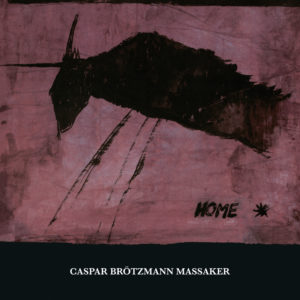 Sounding something like The Birthday Party playing noisy free jazz, the Massaker are a brutal guitar-bass-drums (with minimalist vocals) trio; heavy on feedback, tense dynamics and churning distortion, but sometimes almost groovy and (very) occasionally kind of pretty. Home was their fifth album and it’s pretty similar to the only other one of their albums that I know, The Tribe, from 1987. Squally, angular and dark but with insistent percussion, it’s a great palate-cleanser for your ears after too much pop music.
Sounding something like The Birthday Party playing noisy free jazz, the Massaker are a brutal guitar-bass-drums (with minimalist vocals) trio; heavy on feedback, tense dynamics and churning distortion, but sometimes almost groovy and (very) occasionally kind of pretty. Home was their fifth album and it’s pretty similar to the only other one of their albums that I know, The Tribe, from 1987. Squally, angular and dark but with insistent percussion, it’s a great palate-cleanser for your ears after too much pop music.
I could say the same about this, very different but equally eccentric record:
JZ Replacement
Disrespectful
Rainy Days Records
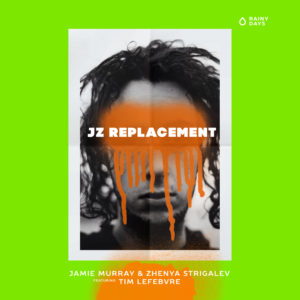
Zhenya Strigalev (saxophone), Jamie Murray (drums) and Tim Lefebvre (bass) have made a frankly insane-sounding but weirdly addictive record that at different times reminds me of the John Zorn/Bil Laswell/Mick Harris jazz/grind band Painkiller, Ornette Coleman and King Tubby. But it also has the odd moment of funk, breakbeat and drum-n-bass. Nevertheless it’s amazingly coherent and although at times I thought Murray, Strigalev or Lefebvre was what made it so great, subtracting any one element would make it all collapse. Recording something at once as familiar and peculiar as any song here (‘Guilty Look 3‘ is a great example) is a special skill. Disrespectful borrows from everywhere and yet somehow sounds like nothing else – and really that’s just what jazz is all about.
Perchta
Ufång
Prophecy Productions
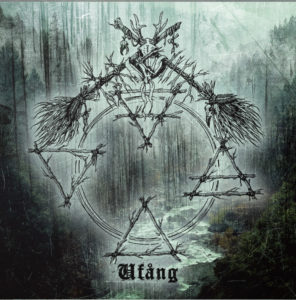 This Austrian black metal project has a very specific local (Tyrolean) focus, but judging by its Facebook page is the brainchild of Italian ex-pat Fabio D’Amore of symphonic power metal band Serenity; which makes sense – for all its atmospheric/folkish elements (there are some very nice jangly clean parts), this is a theatrical, musicianly album which feels epic and polished rather than dark and brutal. The band’s name refers to a pagan goddess, and throughout the album an odd, witchy narrator pops up declaiming or whispering, who I assume is the woman in the artwork, who the promotional material refers to as “the front woman [who] will sermonize, face-painted in historical black garb with embroidered belt and cast-iron broom …”
This Austrian black metal project has a very specific local (Tyrolean) focus, but judging by its Facebook page is the brainchild of Italian ex-pat Fabio D’Amore of symphonic power metal band Serenity; which makes sense – for all its atmospheric/folkish elements (there are some very nice jangly clean parts), this is a theatrical, musicianly album which feels epic and polished rather than dark and brutal. The band’s name refers to a pagan goddess, and throughout the album an odd, witchy narrator pops up declaiming or whispering, who I assume is the woman in the artwork, who the promotional material refers to as “the front woman [who] will sermonize, face-painted in historical black garb with embroidered belt and cast-iron broom …”

Not really my cup of tea overall, which is a shame because I really like the idea of the Tyrolean folklore etc, but it’s extremely well done and has some very good tunes and with the usual excellent Prophecy treatment it will no doubt find its audience.

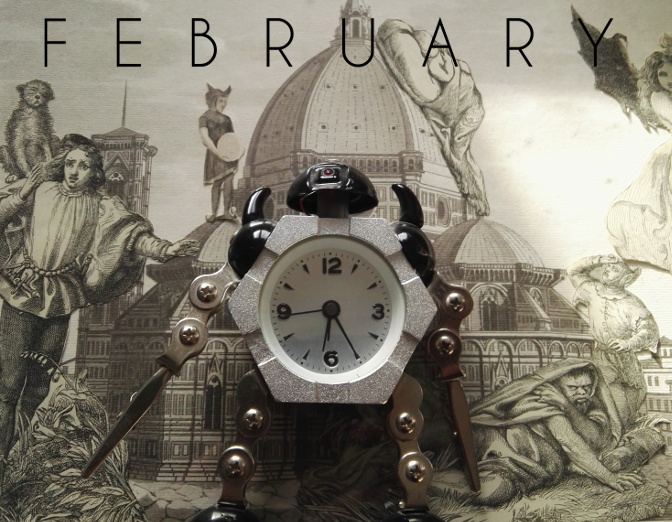
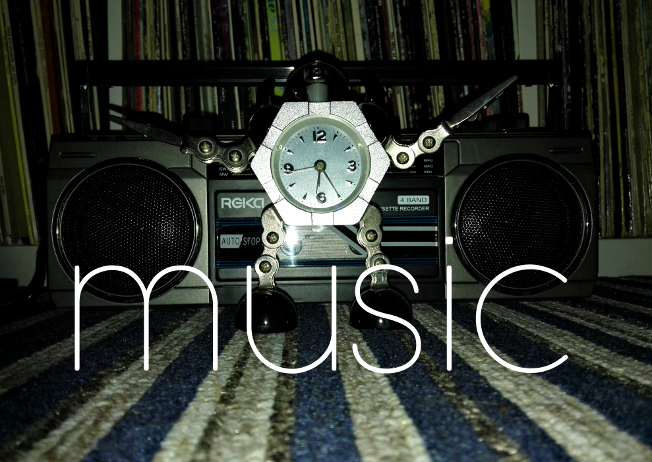
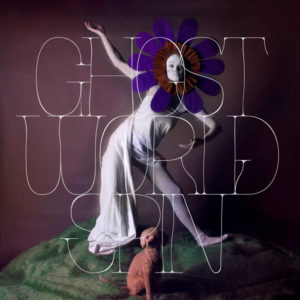

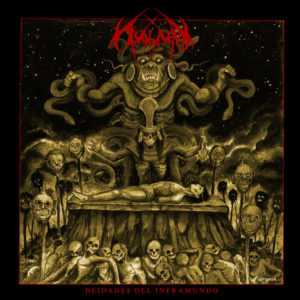
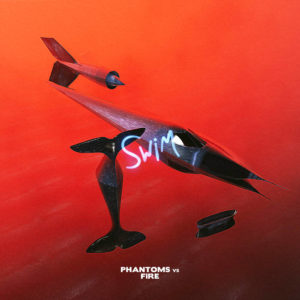

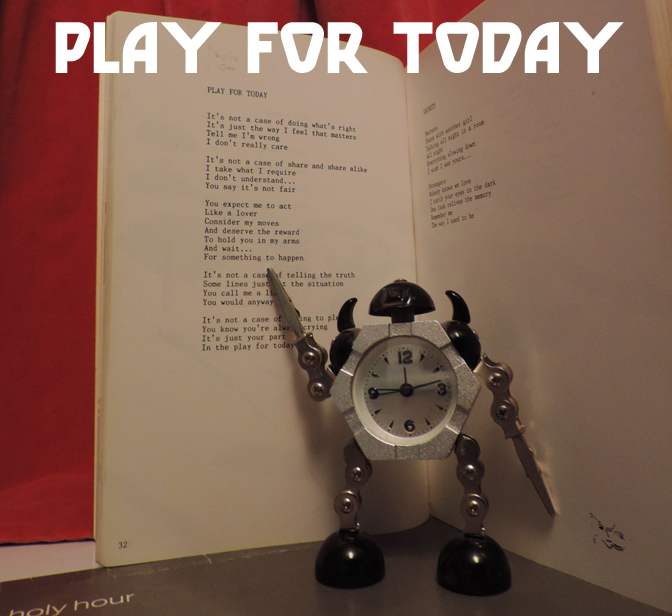

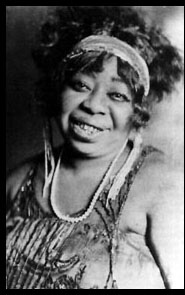 Heartbreakingly sad but also funny and rebellious blues performance by one of my favourite blues singers, with brilliant guitar playing by Tampa Red
Heartbreakingly sad but also funny and rebellious blues performance by one of my favourite blues singers, with brilliant guitar playing by Tampa Red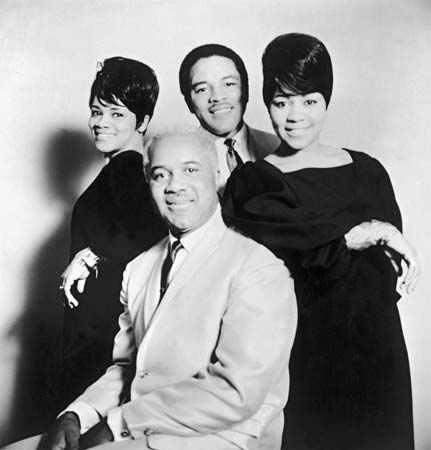
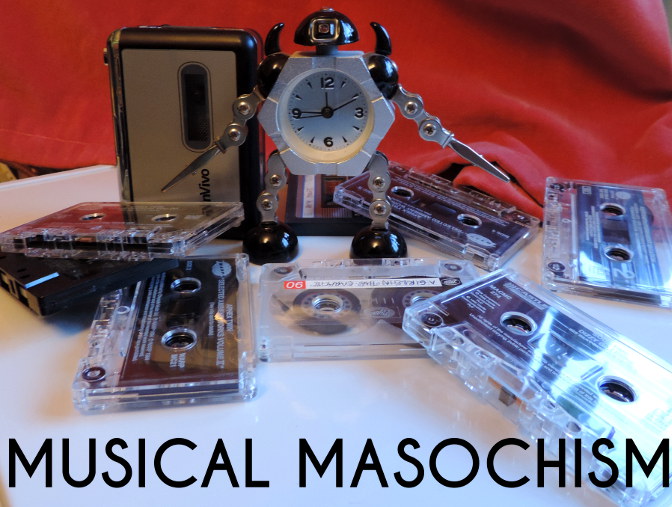

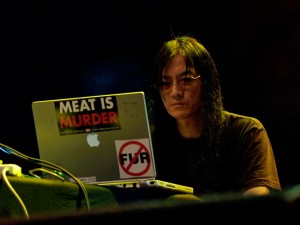
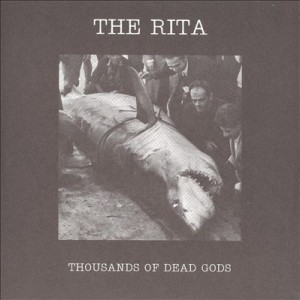 Thousands of Dead Gods (2006) by The Rita many times without ever getting used to it. This makes the noise endlessly surprising, alienating or boring, depending on one’s mood. The sense of noise as abstract is reinforced by its context-lessness; typically the artwork for a Merzbow album is as enigmatic and unrevealing as the album within, and occasionally every bit as flatly un-evocative (not a criticism!) as the Merzbow sound itself. Cultural identifiers in pure noise are also minimalist in the extreme; the race, nationality or gender of noise artists tends to be known only insofar as the artist wishes it to be so.
Thousands of Dead Gods (2006) by The Rita many times without ever getting used to it. This makes the noise endlessly surprising, alienating or boring, depending on one’s mood. The sense of noise as abstract is reinforced by its context-lessness; typically the artwork for a Merzbow album is as enigmatic and unrevealing as the album within, and occasionally every bit as flatly un-evocative (not a criticism!) as the Merzbow sound itself. Cultural identifiers in pure noise are also minimalist in the extreme; the race, nationality or gender of noise artists tends to be known only insofar as the artist wishes it to be so.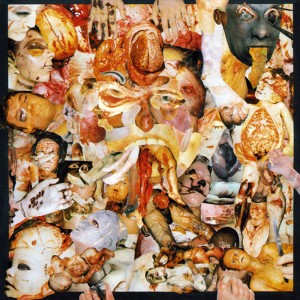 Back in the 80s, this kind of music had an outsider/snob appeal even within the metal genre. 80s metal (on the whole) strove for clarity and precision; Carcass (emerging from an anarcho-crust/punk background) pushed the boundaries of musical extremity and taste (using the notorious collages of medical photos for their artwork, rather than relatively cuddly horror mascots like Iron Maiden’s Eddie) beyond what the standard fan of Iron Maiden, W.A.S.P., Metallica or even Slayer might find acceptable. To say that death metal is relatively lighthearted is slightly misleading – Carcass’ early music was informed by a radical vegetarian disgust with all things meat-based in quite a serious way – but as a subgenre of a popular youth-focussed music it lacks the gravitas of the kind of music which made the late 70s a darker place to have ears.
Back in the 80s, this kind of music had an outsider/snob appeal even within the metal genre. 80s metal (on the whole) strove for clarity and precision; Carcass (emerging from an anarcho-crust/punk background) pushed the boundaries of musical extremity and taste (using the notorious collages of medical photos for their artwork, rather than relatively cuddly horror mascots like Iron Maiden’s Eddie) beyond what the standard fan of Iron Maiden, W.A.S.P., Metallica or even Slayer might find acceptable. To say that death metal is relatively lighthearted is slightly misleading – Carcass’ early music was informed by a radical vegetarian disgust with all things meat-based in quite a serious way – but as a subgenre of a popular youth-focussed music it lacks the gravitas of the kind of music which made the late 70s a darker place to have ears. every bit as evocative of the 1970s as glam or disco, but the way it embodies its era, its brutalist architecture and grey/brown/beige ambience, combats any possible sense of nostalgia. Although it’s easy to say why it’s interesting, liking Throbbing Gristle (as many have done and continue to do) is much harder to explain. The appeal of TG; in effect the appeal of being made to feel uneasy or disgusted, is an odd way to be entertained. On the surface you could say the same about the horror genre in cinema and literature, but Throbbing Gristle’s effect is utterly different from straightforward horror-as-entertainment, feeling (to me anyway) more analogous to the JG Ballard of The Atrocity Exhibition or Crash than to Stephen King, perhaps because like Ballard, TG’s work had more to do with documenting than it did with entertaining. Although there was undoubtedly an element of confrontation in TGs music (especially in a live setting), as with pure noise, confrontation
every bit as evocative of the 1970s as glam or disco, but the way it embodies its era, its brutalist architecture and grey/brown/beige ambience, combats any possible sense of nostalgia. Although it’s easy to say why it’s interesting, liking Throbbing Gristle (as many have done and continue to do) is much harder to explain. The appeal of TG; in effect the appeal of being made to feel uneasy or disgusted, is an odd way to be entertained. On the surface you could say the same about the horror genre in cinema and literature, but Throbbing Gristle’s effect is utterly different from straightforward horror-as-entertainment, feeling (to me anyway) more analogous to the JG Ballard of The Atrocity Exhibition or Crash than to Stephen King, perhaps because like Ballard, TG’s work had more to do with documenting than it did with entertaining. Although there was undoubtedly an element of confrontation in TGs music (especially in a live setting), as with pure noise, confrontation 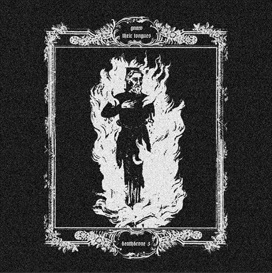 isn’t the focal point that it becomes in the power electronics of groups like Whitehouse and Sutcliffe Jügend who (to some extent) followed on from the early British industrial scene. There is also a more straightforwardly ‘horror noise’ sub-subgenre including bands like Abruptum and the aforementioned Gnaw Their Tongues, whose aim seems to be to engender (with, it must be said, varying degrees of success) extreme anxiety in the listener; significantly different from the almost abstract quality of pure (if harsh) noise artists like Merzbow, easier to understand, but also easier to dismiss as sensationalism.
isn’t the focal point that it becomes in the power electronics of groups like Whitehouse and Sutcliffe Jügend who (to some extent) followed on from the early British industrial scene. There is also a more straightforwardly ‘horror noise’ sub-subgenre including bands like Abruptum and the aforementioned Gnaw Their Tongues, whose aim seems to be to engender (with, it must be said, varying degrees of success) extreme anxiety in the listener; significantly different from the almost abstract quality of pure (if harsh) noise artists like Merzbow, easier to understand, but also easier to dismiss as sensationalism.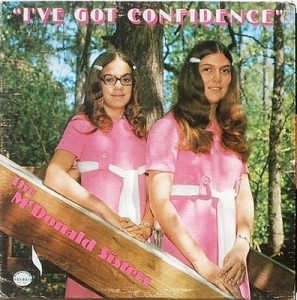 Across all of the arts there are ‘so bad it’s good’ works that appeal on the ironic level of kitsch. These are completely subjective and therefore a bit of a minefield; at what point does listening to something that you personally think is so awful that it’s funny become just listening to it; and is there any difference anyway? Did my teenage self and friends have a different experience listening to an old Shakin’ Stevens tape ‘for a laugh’ than “Shaky”’s actual fans did or do? Well, yes, presumably; they probably don’t laugh as much. Still; it’s all ‘listening with pleasure’ and not only is it subjective, but it’s all about timing. The awfulness of music is as much about the zeitgeist as the popularity of music is; hard to imagine now, but there was a time in the late 80s when listening to Abba (or The Carpenters for that matter) could be enjoyed as revelling in tacky 70s awfulness; but since the early 90s they have been revered by the once-embarrassed media as a great band after all.
Across all of the arts there are ‘so bad it’s good’ works that appeal on the ironic level of kitsch. These are completely subjective and therefore a bit of a minefield; at what point does listening to something that you personally think is so awful that it’s funny become just listening to it; and is there any difference anyway? Did my teenage self and friends have a different experience listening to an old Shakin’ Stevens tape ‘for a laugh’ than “Shaky”’s actual fans did or do? Well, yes, presumably; they probably don’t laugh as much. Still; it’s all ‘listening with pleasure’ and not only is it subjective, but it’s all about timing. The awfulness of music is as much about the zeitgeist as the popularity of music is; hard to imagine now, but there was a time in the late 80s when listening to Abba (or The Carpenters for that matter) could be enjoyed as revelling in tacky 70s awfulness; but since the early 90s they have been revered by the once-embarrassed media as a great band after all. This category takes it for granted that unhappiness is a form of unpleasantness that is most often avoided; which may not be strictly true – or obviously isn’t, given the endless popularity of tragedies, murder mysteries etc. Still, it’s a basic human truth (I hope) that most people would rather be happy than sad. Most of the time that is; historically, music was most often written for occasions; sad music was required for a funeral, just as weddings demanded happy music. Tudor and baroque music often had mythological, narrative or literary inspiration which dictated the mood of the works. For a court composer to make a cheerful-sounding funeral dirge or a comic opera from a tragic mythological story would be perverse at best and bad workmanship at worst.
This category takes it for granted that unhappiness is a form of unpleasantness that is most often avoided; which may not be strictly true – or obviously isn’t, given the endless popularity of tragedies, murder mysteries etc. Still, it’s a basic human truth (I hope) that most people would rather be happy than sad. Most of the time that is; historically, music was most often written for occasions; sad music was required for a funeral, just as weddings demanded happy music. Tudor and baroque music often had mythological, narrative or literary inspiration which dictated the mood of the works. For a court composer to make a cheerful-sounding funeral dirge or a comic opera from a tragic mythological story would be perverse at best and bad workmanship at worst.